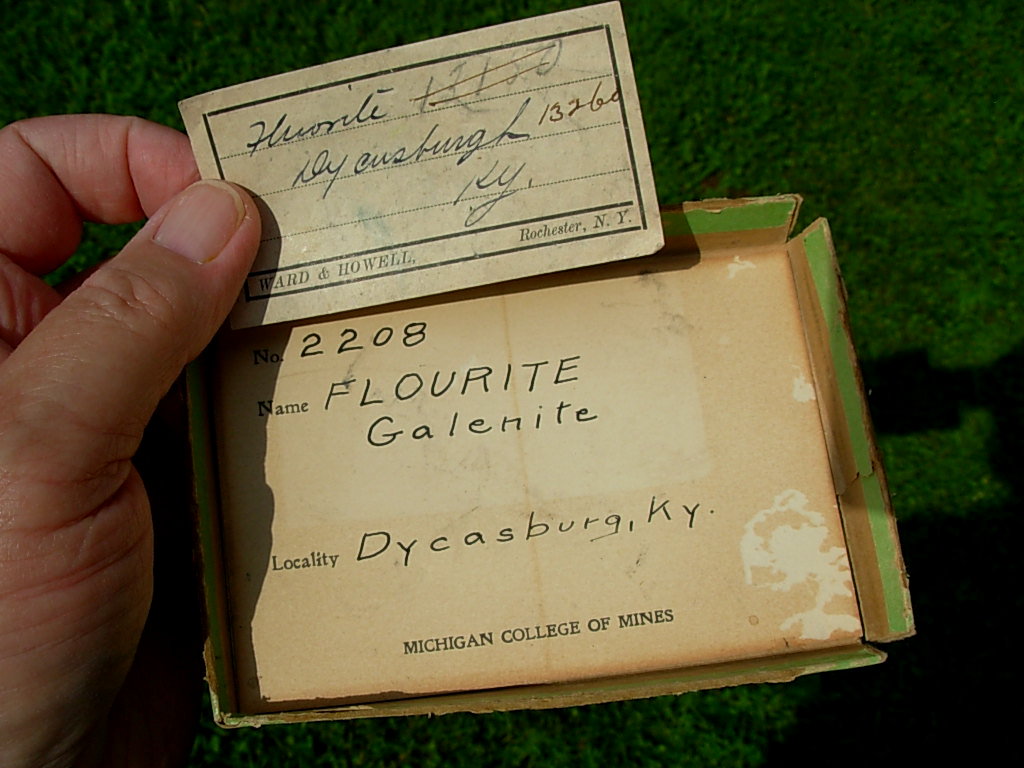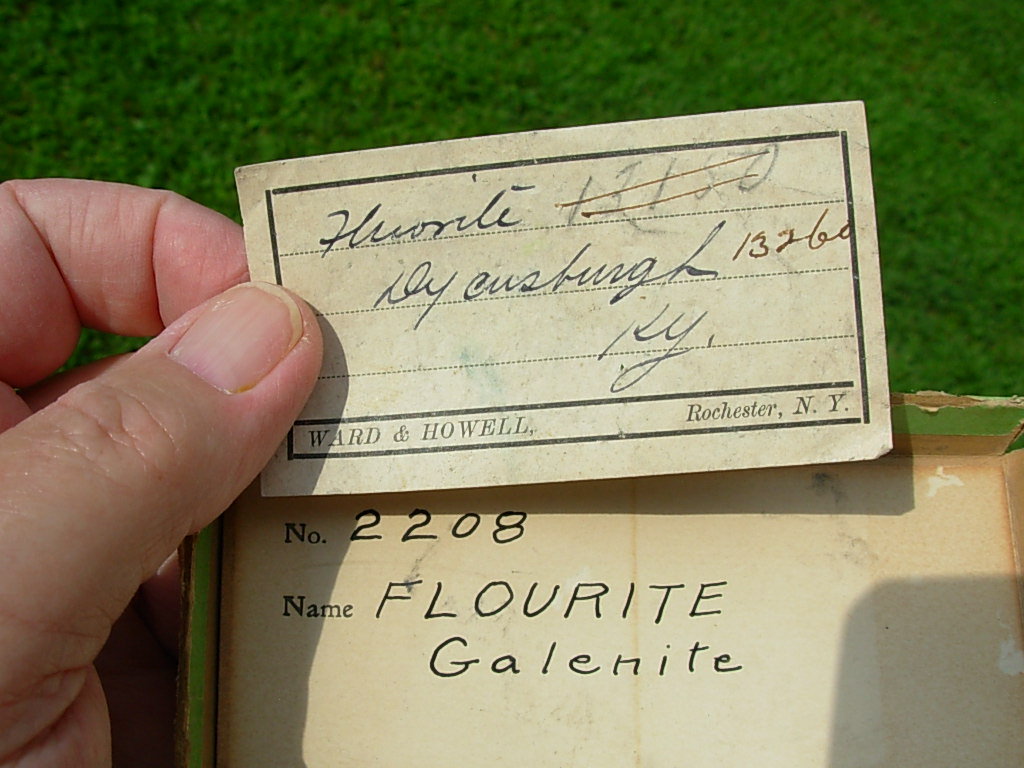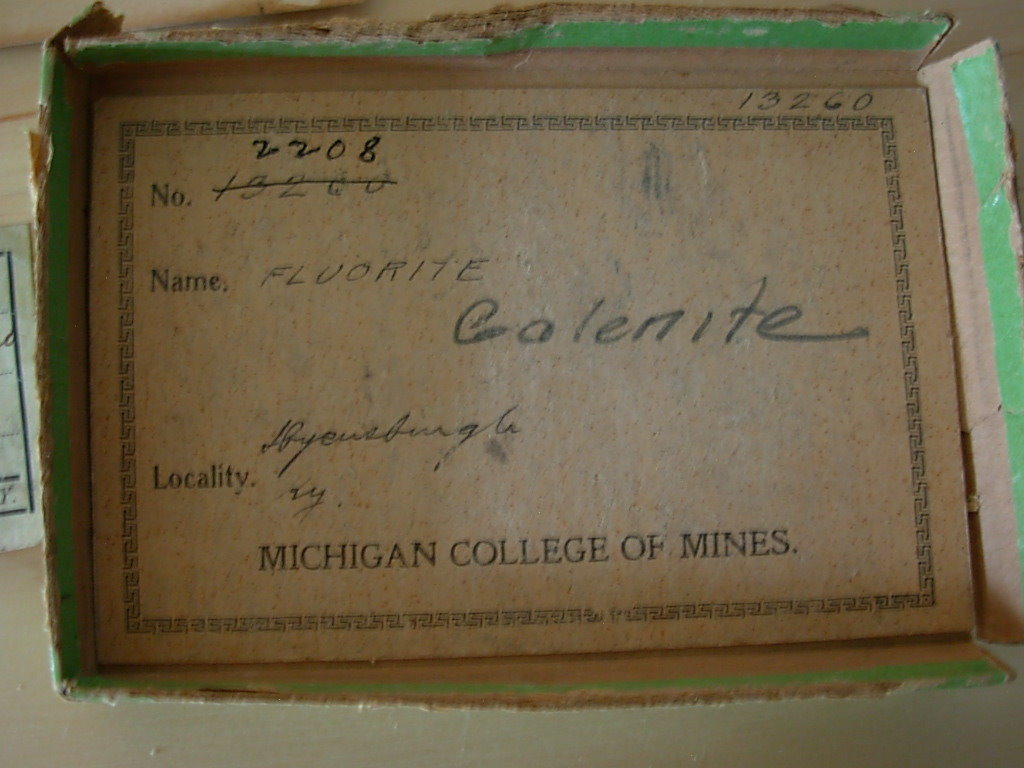Fluorite and Galenite

Here starts our educational journey. I had never heard the term "Galenite" and began researching it. Most references stated that Galenite was Galena. This did not look like any galena formation I had ever seen. Rather than being the well known Galena Crystals, this looked more like veins of Galena. Further research led me to understand that Galenite was actually the name given to raw galena ore by the miners. I now was a bit smarter.
Now for the location. There were two specimen cards with this piece. One from Ward & Howell Rochester, NY that stated the piece was from Dycusburgh, Kentucky, and a second card from Michigan College of Mines stating it came from Dycasburg, Ky. It turns out that neither Ward & Howell or Michigan College of Mines could spell. The town is actually Dycusburg, Kentucky. Dycusburg is an old riverfront trading town in Western Kentucky on the Columbia River. The town as of 2010 listed 39 residents and a total area of 0.04 square mile area...not exactly a mining area, but close to the nearby Illinois and Missouri mining areas. This piece may have been found in Dycusburg, but we believe it was probably traded there by a miner. For more information on Dycusburg; www.dycusburg.com/history1.html

Now we started researching the Michigan College of Mines...wow...we hit pay dirt here. There is a 4 page History of this College published in 2013. It turns out that the college was originally built in 1885 and from 1885 to 1897 was called Michigan Mining School. In 1897 the school was renamed. From 1897 to 1927 it was called Michigan College of Mines. In 1927 it was renamed and called Michigan College of Mining and Technology (MCMT). It became obvious that this mineral card was from 1897 to 1927. Now for our next surprise...we lifted the Michigan College of Mines card from the box lid and found an older Michigan College of Mines card underneath. Given the writing styles the older card appears much older than the first card which led us to believe this could be a specimen from the late 1890's!
There is lots more history on Michigan College of Mines available at these 4 pages if you wish to learn more;
www.coppercountryexplorer.com/2013/07/the-michigan-college-of-mines-p1/
www.coppercountryexplorer.com/2013/08/the-michigan-college-of-mines-p2/
www.coppercountryexplorer.com/2013/08/the-michigan-college-of-mines-p3/
www.coppercountryexplorer.com/2013/08/making-room-for-progress/
O.K. ... So now we know we have a very old specimen with documentation that it is from Dycusburg, Kentucky (obtained by trade or mining we do not know) that was in the Michigan College of Mines sometime between 1897 and 1927! Great!...now lets research the mineral card from Ward & Howell in Rochester, NY. Again we hit pay dirt! The Mineralogical Record Biographical Archive has an extensive documentation of Wards Natural Science labels and has photo and measurements of this type of mineral card that was only issued from 1875 to 1891.Henry Ward "founded Ward's Natural Science Establishment in 1862 and it became a leading 19th-century supplier of natural science materials to museums in North America. In 1875 he joined in a partnership with Edwin Howell to sell minerals under the name "Ward & Howell"; this lasted until 1891" (We found label specimens on the minrec.org website)


So what have we learned? Based on Included Documentation, this specimen was originally from Dycusburg, Kentucky prior to the 1875 to 1891 time frame. It is first documented as Fluorite from Ward & Howell in Rochester, NY sometime between 1875 and 1891. It wound up in the Michigan College of Mines Sometime between 1897 and 1927. During this period the identification of Galenite was made and added to the mineral card. We have no knowledge of its ownership between 1927 and 2012. It could have remained at the Michigan colleges or been privately owned. The really exciting thing is that we have proven it has been in a collection for well over 100 years , possibly as many as 139 years by documentation......Now This is Old Stock!
